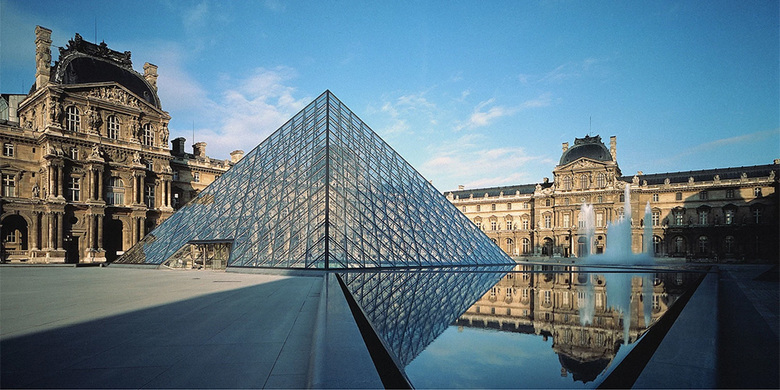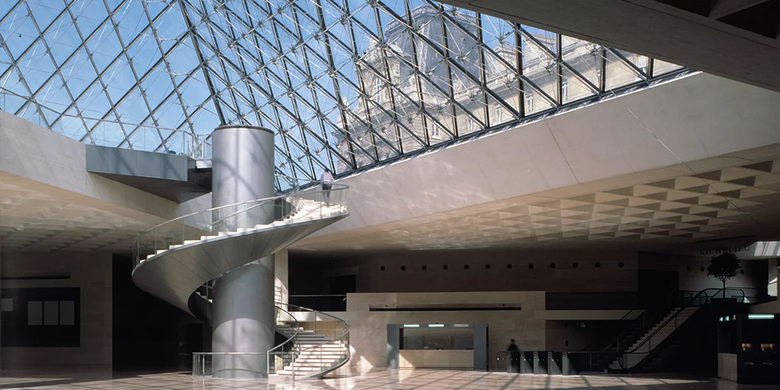AIA's 2017 Twenty-five Year Award to Louvre Pyramid
The American Institute of Architects (AIA) has announced that its 2017 Twenty-five Year Award, which is "conferred on a building that has stood the test of time for 25-35 years," will go to I.M. Pei's iconic entrance to the Louvre in Paris.
It is the fourth time since the inaugural award in 1969 that the awarded building is located outside of the United States; earlier non-American recipients were Josep Lluís Sert's Fundació Joan Miró in Barcelona (2002), SOM's Hajj Terminal in Saudia Arabia (2010), and SOM's Broadgate Exchange House in London (2014).
According to the announcement from the AIA, the award is being given to what it's calling Grand Louvre - Phase I: "The entirety of the project, known as the Grand Louvre, was executed in two phases over the course of a decade. For the first phase, which gave rise to the pyramid, Pei reorganized the museum around the central courtyard, the Cour Napoléon, transforming it from a parking lot to one of the world’s great public spaces."
When Pei's design of the 71-foot-tall glass pyramid was unveiled to the public in the mid-1980s, reactions were far from universally "great." As Paul Goldberger wrote upon its ribbon-cutting in March 1989, "The pyramid was at first bitterly denounced by many prominent people in the arts, who viewed it as an unwelcome intrusion of harsh modernism into the sacred precincts of Paris," but its "sharpest critics seem to have retreated" by the time of its opening.
Twenty-seven years later, it is considered, as the AIA states, "an unexpected treasure that [Parisians] and visitors from around the globe value as much as the priceless works of art contained within the Louvre."

